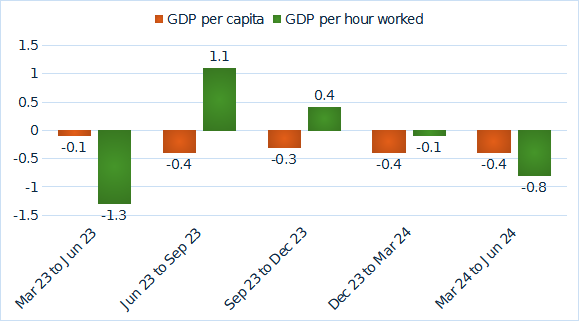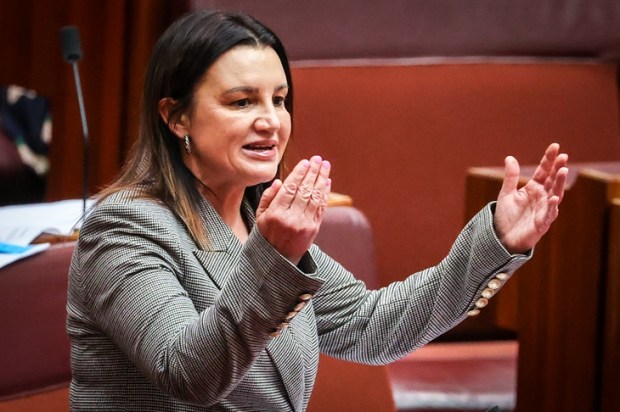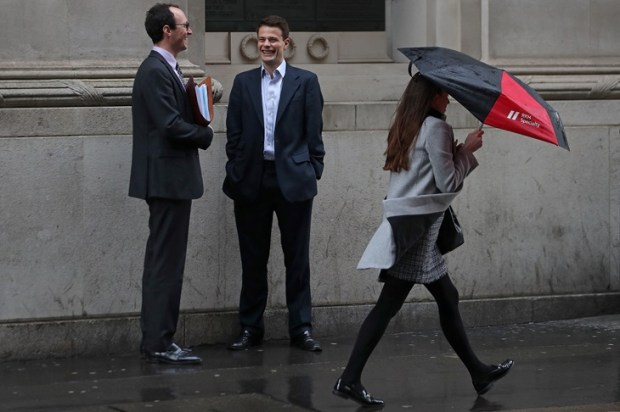The Australian economy is flat-lining. The blame game has started. The government blames everyone other than itself. Unfortunately, Jim Chalmers and Anthony Albanese continually spread economic ‘misinformation’ whilst the government shoulders responsibility for Australia’s intransigent inflation and economic malaise.
The latest flashpoint is Jim Chalmers blaming the RBA for ‘smashing the economy’ by increasing interest rates. However, this is akin to blaming firefighters for putting out a fire that you caused. If the government causes inflation, then it is the RBA’s job to counteract the damage done by the government. The government lit the fire. The RBA is putting it out.
Is Jim Chalmers unaware of how inflation and interest rates work?
The economy is in bad shape. Australia is in a per capita recession and has been for more than a year. GDP-per-person is falling and is showing little sign of improving. GDP is growing at an anemic rate. GDP per hour is falling, suggesting productivity is worsening. Inflation is still too high. While inflation is under 4 per cent, persistent supply shortages and immigration have kept it elevated. Immigration adds to inflation, but it is also the only reason Australia is not actually in a recession.

Let’s be clear: Anthony Albanese and Jim Chalmers have made inflation worse. This forces the RBA to keep rates higher for longer. External factors have contributed, but Anthony Albanese and Jim Chalmers have not helped.
Let’s take a clear example: subsidies. The government has brought in a modest energy subsidy and claimed that it is deflationary. The government is spreading misinformation. The hollow claims that energy subsidies reduce inflation are simply wrong. They are a one-time price decrease. They reverse in one year, whereupon there will be inflation. At best they are temporary. Further, they do nothing to change the growth rate in energy prices. The subsidies do not reduce inflation.
Government spending has exacerbated inflation, even if their bad policies are the bigger and more pernicious issue.
RBA Governor Michele Bullock specifically stated that the public sector accounted for a ‘large chunk’ of demand. She also said, ‘I don’t think anybody seriously suggests that government spending in a budget is the primary determinant of prices in our economy.’ The government wrongly claimed that this let them off the hook. Government spending here is like adding fuel to a raging fire that emergency workers are trying desperately to control.
The bigger issue is policies that undermine productivity or distort markets. This includes complex changes to workplace laws and badly structured childcare ‘subsidies’. Then there is the persistent issue that many Australians suffer from bracket creep, which harms productivity by deterring people from working more hours in their area of expertise. Why sacrifice time with your family when you only keep half of the hours you work anyway? There is no desire to tackle this problem as it would jeopardize the government’s ability to pork barrel every election cycle.
The government has form in spreading economic misinformation. For example, the government claimed it would deliver the Stage 3 tax cuts in full. It reneged on this promise. It pretended they still delivered a tax cut to everyone. They did not as they reversed a legislated tax cut, thereby creating a tax hike. They said they would not increase superannuation taxes. But, they have tried to do so and have tried to set a pernicious precedent with a tax on unrealised capital gains.
The government’s misinformation is also divisive. The government is very skilled at creating minority groups to attack. This includes higher income earners (viz., Stage 3 backflip and superannuation tax grab), universities (viz., student caps), supermarkets (viz., inchoate claims of price gouging), or banks. There is always a minority to attack. Until you have attacked everyone. The government’s approach is divisive and it is dangerous. Ironically, as Jim Chalmers remarked, this should be disqualifying.
The government has thus shifted into blame-shifting and scapegoating mode. Today, it is the RBA’s fault. In the past, it has also been the fault of the banks, the supermarkets, overseas forces, and almost anyone else. Blame shifting is political survival. If people push back, accuse them of spreading so-called ‘misinformation’. This is disingenuous and can only work for so long.
The government’s economic misinformation has the stench of hypocrisy about it. Anthony Albanese and Jim Chalmers like to decry so-called ‘misinformation’, so much so that they have looked to legislate against it. But, by attempting to scapegoat, or blame, everyone else, the government consistently spreads economic and financial ‘misinformation’ in service of its political opportunism.

























